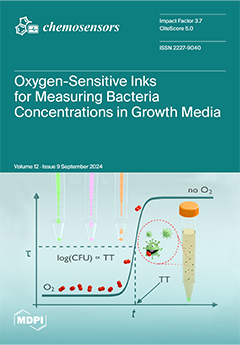As industry continues to develop rapidly, the greenhouse effect is becoming increasingly severe. CO
2, CH
4, and N
2O are the three primary greenhouse gases, making their effective monitoring a crucial step in reducing emissions. This paper investigates the
[...] Read more.
As industry continues to develop rapidly, the greenhouse effect is becoming increasingly severe. CO
2, CH
4, and N
2O are the three primary greenhouse gases, making their effective monitoring a crucial step in reducing emissions. This paper investigates the gas sensing performance of Mo-doped WSe
2 for these three gases, through a theoretical study. First, using first-principles calculations, the doping behavior of Mo in WSe
2 is examined. Subsequently, the adsorption properties of Mo-WSe
2 for CO
2, CH
4, and N
2O are analyzed by calculating adsorption energy, charge transfer, the electron localization function (ELF), Hirshfeld partition (IGMH), and the density of states (DOSs), culminating in an analysis of its sensing properties. The results indicate that when Mo is positioned above the upper Se atom, the structure is most stable. Therefore, this position is selected as the optimal adsorption site for studying the adsorption of the three gases. The adsorption energies for CO
2, CH
4, and N
2O are 1.349 eV, −1.194 eV, and −0.528 eV, respectively, with corresponding charge transfers of 0.418, 0.450, and 0.115. In the N
2O and CO
2 adsorption systems, significant adsorption energy and charge transfer are observed, leading to relatively better adsorption compared to the CH
4 system. Additionally, considering the adsorption performance, Mo-WSe
2 demonstrates good sensor response and desorption times for N
2O and CO
2 at temperatures above 298 K. The findings of this research provide theoretical guidance for the application of Mo-WSe
2 as a gas sensing material for detecting greenhouse gases.
Full article





